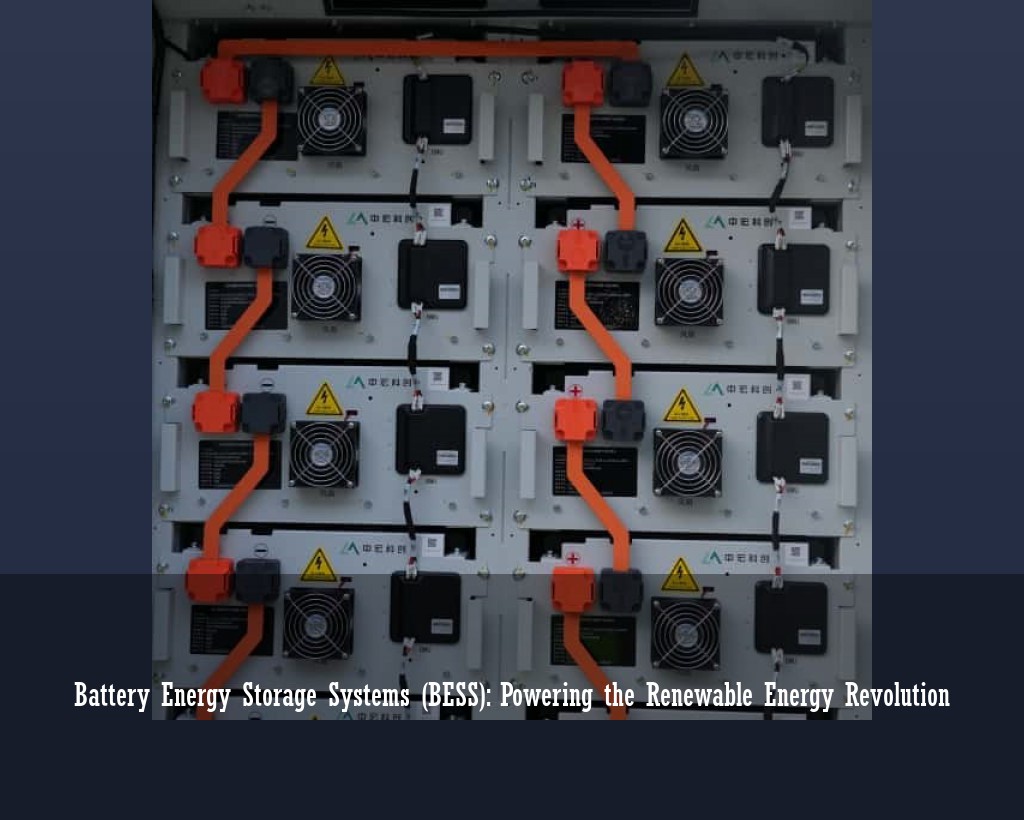Battery Energy Storage Systems (BESS): Powering the Renewable Energy Revolution
Let's cut through the jargon: Battery Energy Storage Systems (BESS) are essentially giant power banks for our electrical grids. Imagine being able to store solar energy captured at noon to power your Netflix binge at midnight – that's BESS in a nutshell. These systems combine advanced batteries with smart management tech to store electricity when production exceeds demand and release it when needed.
Battery Energy Storage Systems (BESS): Powering the Renewable Energy Revolution

Table of Contents
What Exactly Is BESS?
Let's cut through the jargon: Battery Energy Storage Systems (BESS) are essentially giant power banks for our electrical grids. Imagine being able to store solar energy captured at noon to power your Netflix binge at midnight – that's BESS in a nutshell. These systems combine advanced batteries with smart management tech to store electricity when production exceeds demand and release it when needed.
The Anatomy of a Game-Changer
A typical BESS setup contains three core components:
- Battery cells (usually lithium-ion these days)
- Power conversion systems
- Advanced control software
Why Our Grids Are Crying for Help
Here's the ugly truth: our century-old grid architecture wasn't built for today's renewable reality. Traditional power plants could adjust output like a gas pedal, but solar and wind? They're more like unpredictable teenagers – full of energy one minute, moody and withdrawn the next.
Consider California's 2023 grid emergency – a 1,200 MW deficit during peak demand that nearly caused rolling blackouts. Utilities had to keep fossil fuel plants idling (costing $86 million weekly) as backup, creating what engineers call "spinning reserve" – basically keeping engines running just in case. It's like leaving your car idling in the driveway 24/7 in case you need groceries at 3 AM.
How BESS Becomes the Grid's New Best Friend
This is where battery storage systems shine. Take Texas' 2024 winter storm – while natural gas pipes froze, BESS installations delivered 1.8 GW of emergency power within milliseconds. That's enough to keep 360,000 homes warm when traditional systems failed.
The Economics of Instant Gratification
BESS doesn't just prevent blackouts – it's changing energy economics. Southern California Edison's 400 MW BESS project:
- Reduces peak energy costs by 34%
- Cuts carbon emissions equivalent to removing 86,000 cars
- Pays back installation costs in 6.2 years
BESS in Action: From Theory to Practice
Let's get concrete. In 2024, TBEA's 800 MWh BESS installation in Xinjiang achieved something remarkable – it stored enough wind energy during spring storms to power Urumqi's subway system for 18 consecutive days. The secret sauce? Their proprietary battery management system that extends cell life by 40% compared to industry standards.
A Residential Revolution
It's not just utilities benefiting. The Johnson family in Arizona combined rooftop solar with a 40 kWh home BESS:
- Reduced grid dependence by 92%
- Eliminated peak-time charges
- Created $2,400 annual energy credit through surplus sales
The Nuts and Bolts of Modern BESS
Today's systems are marvels of engineering. CATL's new "cell-to-pack" technology increases energy density to 280 Wh/kg – that's like squeezing a 2015-era EV battery into a briefcase. Combined with AI-driven predictive analytics, these systems can forecast grid needs 72 hours in advance with 94% accuracy.
The Chemistry Behind the Magic
While lithium-ion dominates (82% market share), alternatives are emerging:
- Flow batteries for long-duration storage
- Solid-state prototypes hitting 500+ charge cycles
- Saltwater-based systems for eco-sensitive areas
As we navigate this energy transition, one thing's clear: BESS isn't just supporting renewable energy – it's rewriting the rules of how we power our world. The technology continues to evolve faster than most predicted, with 2024 seeing a 67% year-over-year increase in global BESS deployments. While challenges remain (like recycling infrastructure), the storage revolution is undeniably underway.
Related Contents

Battery Energy Storage Systems (BESS): Powering the Renewable Energy Revolution
Let's cut through the jargon: Battery Energy Storage Systems (BESS) are essentially giant power banks for our electrical grids. Imagine being able to store solar energy captured at noon to power your Netflix binge at midnight – that's BESS in a nutshell. These systems combine advanced batteries with smart management tech to store electricity when production exceeds demand and release it when needed.

Battery Energy Storage Systems (BESS): The Brain Behind Renewable Energy Revolution
Ever wondered why your solar panels stop working at night? Or why wind farms sometimes pay customers to take their excess electricity? The answer lies in energy storage - or rather, the lack of it. As of March 2025, over 30% of renewable energy generated worldwide gets wasted due to inadequate storage solutions. That's enough to power entire cities!

Battery Energy Storage Systems (BESS): The Brain Behind Renewable Energy Revolution
Ever wondered why your solar-powered neighborhood still needs fossil fuel backups? Battery Energy Storage Systems (BESS) hold the answer. As renewable energy capacity grew 95% globally from 2015-2023, we've hit an ironic bottleneck - the cleaner our grids become, the more unstable they get. Solar panels sleep at night. Wind turbines nap on calm days. This intermittency costs the U.S. power sector $120 billion annually in balancing services.

Battery Energy Storage Systems: Powering Renewable Energy Transition
You know how people talk about renewable energy like it's some magic bullet? Well, here's the kicker: solar panels don't work when it's cloudy, and wind turbines stand still on calm days. This intermittency problem costs the global economy $12 billion annually in wasted clean energy - enough to power 15 million homes. That's where battery energy storage systems (BESS) come charging in, quite literally.

Battery Energy Storage Systems: Powering the Renewable Revolution
California's grid operators scrambling during a September 2024 heatwave as solar output plummets at sunset while air conditioners roar. Sound familiar? Traditional power grids weren't designed for today's renewable energy mix or our climate-constrained reality. They're essentially giant balancing acts without safety nets - any mismatch between supply and demand risks blackouts or equipment damage.
